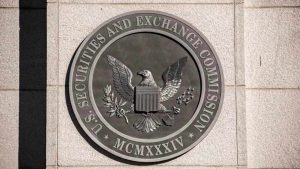Here’s How Crypto Is Already Addressing FDIC Fed Joint Statement on Risk Assets

The Federal Reserve and FDIC (Federal Deposit Insurance Corporation) released a joint statement on Tuesday, Jan 3. The paper describes the risks of holding digital assets. But here are some of the ways crypto is addressing those risks with network design and code.
The Fed and FDIC say that with crypto, there is a “risk of fraud and scams among crypto-asset sector participants.” But there are also several countermeasures and security techniques in crypto. Furthermore, cryptocurrency actually uses these to reduce the risk of fraud or scams.
No one is claiming that cryptocurrency is completely incorruptible. Neither is it said that crypto is immune to fraud, scams, or cyber-criminal exploits of the code. There’s no perfect software solution, just as there is no perfect business solution.
Everything in an economy is a tradeoff among comparative advantages. Moreover, those tradeoffs are part of a market game to produce the most and meet the most wants.
But cryptocurrency does offer some features and benefits that gain more security. That’s not just to hold your crypto but also against fraud or scams. These fraud and scam benefits, however, come as a trade-off. You get less control over your account through a centrally regulated, corporate customer help desk.
“Risk of fraud and scams among crypto-asset sector participants…”
DeFi protocols are increasingly developing countermeasures to fraud and scams. DeFi is short for “decentralized finance.” Developers for these platforms are constantly scripting up fraud and scam defenses for the blockchain.
For instance, zero-knowledge proof techniques are touted to be one of the great things to come up next as a revolutionary step forward. Crypto can pair ZK techniques with anti-money laundering (AML) and KYC (know your customer) enforcement. Therefore they can regulate exchange volume to authentic transactions. With ZK proofs, developers can implement this at scale. Furthermore, it can proactively contain solvency problems like what happened at FTX partly because of fake volume.
A study by the National Bureau of Economic Research (NBER) of statistical and behavioral patterns on crypto exchanges found that some 70% of unregulated exchange transactions are wash trading. So, as these upgrades continue to scale to the ecosystems, there will be less fraud and scams as a result of them.
“Legal uncertainties related to custody practices…”
This is an understandable item on the FDIC and Federal Reserve’s list of cautions about cryptocurrency. After 2022, many crypto consumers would now say there was an unfair amount of ambiguity in terms of service and misleading marketing.
This was true for many companies that experienced insolvency in 2022 as the crypto price winter wore on. That includes crypto companies like Blockfi, Genesis, 3 Arrows Capital, FTX, and more.
At the same time, many cryptocurrencies already solved this problem before it became a real, full-blown crypto financial crisis in 2022. In fact, the premier cryptocurrency, Bitcoin (BTC), is predicated on the idea that it could not be more clear whose money is whose on its blockchain:
Not your private keys, not your Bitcoin. Your private keys, your Bitcoin.
It’s ironic that cryptocurrency companies that had solvency crises made their fame off Bitcoin’s coattails. The reason Bitcoin was invented was so that you could be sure your deposits were still there and you could be sure they hadn’t been inflated away through unfair economics.
“Inaccurate or misleading representations and disclosures…”
Again, after the kind of insolvency plague we’ve seen in the crypto industry in 2022, with customers turning to places like FTX and Celsius and finding their crypto was gone, this is an understandable warning.
Many people giving their money to these crypto custodians offering yield did not understand they were making an unsecured loan. The fine print pages on websites for companies like Celsius explained they were lending these companies their money.
The customers thought these were deposits. They didn’t know they were becoming creditors and that if the loan wasn’t repaid, they would legally just have to take the loss. So that was obviously hugely unfair. It was definitely a deceptive tactic to increase their customer registrations.
However, the bad year for centralized finance spells an opportunity for DeFi. Smart contracts, dApps, and web3 platforms are evolving to counter fraud and scams. Users will reward solutions that are simple, fundamentally sound, and automated.
Binance Free $100 (Exclusive): Use this link to register and receive $100 free and 10% off fees on Binance Futures first month (terms).
PrimeXBT Special Offer: Use this link to register & enter POTATO50 code to receive up to $7,000 on your deposits.













